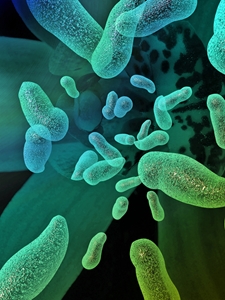If you operate a food laboratory, you need to be in complete control of your business at all times, as even the slightest change in atmosphere can result in deadly bacteria spreading throughout your products or specimens.
As with all workplace hazards, prevention and preparation are the keys to success. As long as your food laboratory is aware of the dangers and has proper protection methods in place, such as Testo digital monitoring systems, it should be set to provide safe and effective service.
If, however, you think that you can go it alone, your products risk being exposed to a number of disease-creating bacteria and pathogens. Here are three of the most common examples.
1. Salmonella
This is one of the most common bacterial infections around the world, so you would think that people would have learned their lesson by now. And yet, time and time again, food vendors and preparation facilities throughout Australia and internationally fail to account for it when handling, storing and cooking food.
Salmonella is mostly present in raw and undercooked eggs, poultry and meat but can also be found in fruit and vegetables that become contaminated. Facilities that prepare milk should also be on the lookout as it has been known to gestate in unpasteurised milk.
Because the presence of this bacteria is dependent on how the food or dairy product in question is cooked, the temperature of your working environment needs to be stable and accurate at all times. If not, the disease has more of a chance to form and spread, which could land you in trouble if the contaminated product hits the shelves.
These lessons should be followed even if the laboratory is only handling raw foods, as rapid temperature fluctuations can still impact the integrity of the product.
2. Campylobacter
Some food laboratories specialise in storing foods before they are transported somewhere or analysed. If these facilities cannot guarantee reliable temperature measurement then there is little point in their operation.
Correct storage is one of the most vital parts of food safety. If it is done incorrectly, the risk of contamination rises greatly, and jeopardises the whole business.
This is especially true with poultry and meat, as both are incredibly sensitive to temperature whether they are in storage or being cooked. They are both also susceptible to Campylobacter bacteria, which is known to form during storage and causes cases of food poisoning if it is not eliminated in the cooking process.
Even in freezing temperatures the bacteria is not always completely eliminated, however, it is a good place to start. Freezers are a great place to focus Testo’s Saveris monitoring system as it can then alert managers of any unplanned temperature changes.
With most forms of bacteria forming through inadequate storing methods, there is no room to take chances.
3. Listeria
While Campylobacter can survive freezing temperatures, Listeria can live in the slightly warmer climate of a refrigerator, where most other illness-causing bacteria perish.
Although Listeria doesn’t quite have the effective range of Campylobacter and Salmonella when causing illness, it does target those who are vulnerable to sickness in general, meaning it still needs to be taken seriously.
Elderly people, pregnant women and young children are at particular risk of catching the disease, as are those who already have a compromised immune system.
Listeria mainly affects ready-to-eat foods that are commonly stored in the refrigerator, a place that people normally associate with food safety. As the appearance of this bacteria is heavily dependant on cooking, storing and reheating temperature, food laboratory managers need to be cautious at all times.
Again, as with all of these bacteria, as long as the appropriate processes are observed and preventive measures are put in place, food laboratories should be able to produce products that are safe and ready for human consumption.









 Reduce cooking oil costs while ensuring quality
Reduce cooking oil costs while ensuring quality Expert knowledge on CO2 monitoring
Expert knowledge on CO2 monitoring Refrigeration knowledge - in 3 modules
Refrigeration knowledge - in 3 modules



